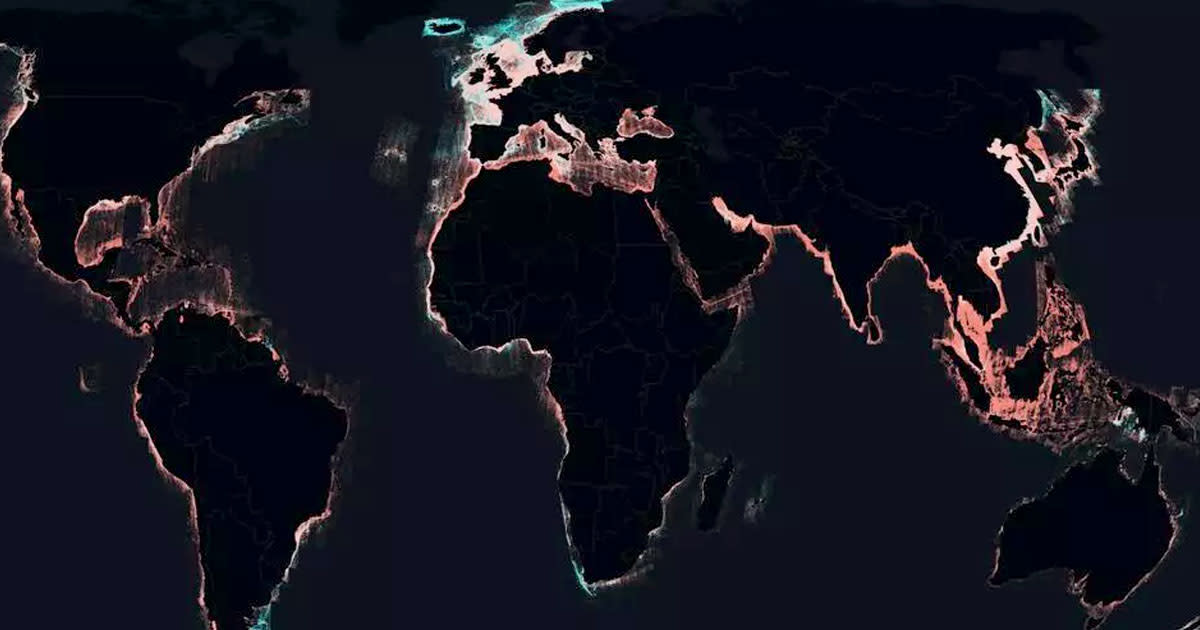New Mapping Finds the Oceans Are Filled With "Dark Vessels"

Dark Vessels
Researchers have exposed an enormous quantity of previously untracked human activity at sea using a combination of satellite imagery, vessel GPS data, and AI.
As detailed in a new paper published in the journal Nature by Global Fishing Watch, a nonprofit backed by Google, researchers found that a whopping 72 to 76 percent of the world's industrial fishing vessels aren't being publicly tracked, with almost a third of "transport and energy vessel activity" found "missing from public tracking systems."
The resulting maps are a stunning reminder of just how many boats and ships, oftentimes referred to as "dark vessels," literally fall under the radar, and how these activities at sea have changed in recent years. It's also an excellent showcase of the power of deep learning algorithms, which can find elusive patterns in massive caches of data — for good or ill.
Lifting the Clouds
Prior to these latest maps, organizations like Global Fishing Watch had been using the Automatic Identification System (AIS) to keep track of these activities. However, that system has some severe limitations, and not every country even requires vessels to use it. It can also easily be turned off to avoid detection.
To get a clearer picture of the situation on a global scale, the researchers used AI to scan 2,000 terabytes of satellite data from the European Space Agency's Sentinel-1 satellite constellation.
"Our satellite mapping revealed high densities of vessel activity in large areas of the ocean that previously showed little to no vessel activity by public tracking systems," the paper reads. Most of this activity is located in South Asia, Southeast Asia, and the northern and western coasts of Africa.
The team also found that offshore energy development had expanded significantly, with the number of new wind turbines outnumbering new oil structures by the end of 2020. Turbines accounted for almost half of all ocean infrastructure in 2021, while oil structures accounted for 38 percent.
Nonetheless, oil structures led to a five times increase in vessel traffic compared to wind turbines.
The new publicly available data comes at a time when maritime activity is expanding at alarming rates and could give policymakers a much-needed overview to enact meaningful change, especially in light of a growing climate crisis.
As our reliance on fossil fuels and depletion of fish stock around the world continues, it's more important than ever to get a clearer picture of all of the activity that has until now been hiding in plain sight.
More on the ocean: Scientists May Be Able to Fight Global Warming by Supercharging Plankton

